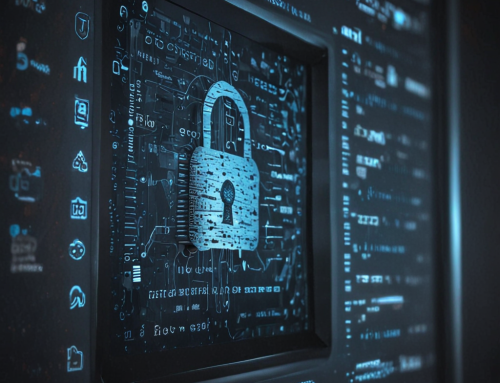Universal Serial Bus (USB) ports are common features of most electronic devices, including computers, smartphones, tablets, and even cars. They are designed to provide easy access to plug-and-play devices such as keyboards, mice, external hard drives, and USB flash drives. While they have revolutionized the way we transfer and store data, they also pose significant cybersecurity risks that can compromise your personal information and even your entire computer system.
6 Cybersecurity Risks of USB Ports
- Malware Infections: USB flash drives are a popular method of distributing malware, which can infect your computer system without your knowledge. This can happen when you insert an infected USB flash drive into your computer and the malware gets automatically transferred to your system. The malware can be designed to steal your personal information, install a keylogger, or even take control of your computer.
- Data Theft: USB ports can also be used to steal your personal information by copying files and documents from your computer system onto a USB flash drive. This can happen if someone gains physical access to your computer system or if you unknowingly plug in an infected USB flash drive. The data can include sensitive information such as bank account details, passwords, and other confidential information.
- Unauthorized Access: USB ports can be used to gain unauthorized access to your computer system. For example, an attacker can use a USB flash drive to inject malicious code into your computer, which can give them remote access to your system. This can allow them to steal your personal information, install malware, or even take control of your computer.
- Physical Security Risks: USB devices can be easily lost or stolen, putting sensitive data at risk. A lost or stolen USB device can be accessed by anyone who finds it, potentially exposing confidential information. This is particularly problematic in a corporate setting, where sensitive information can be stored on portable devices and taken out of the office.
- Firmware Hacking: USB firmware hacking involves modifying the firmware of a USB device to add malicious code. This can enable the hacker to take control of the device, steal data, or spread malware to other devices. Firmware hacking can be difficult to detect and can compromise the security of any computer the USB device is plugged into.
- Unsecured Charging: Even charging your mobile phone or tablet using an unsecured USB port can be risky. Cybercriminals can use a technique called “juice jacking,” where they install malware on a charging station or public USB port. This can steal your personal information, install malware, or even take control of your device.
How to Reduce Your Risk
What can you do to protect yourself? Here are seven steps you can take to protect yourself from cybersecurity risks associated with USB ports.
- Use Trusted Devices: Only use USB flash drives and other devices from trusted sources.
- Keep Your Software Up to Date: Always keep your operating system and antivirus software up to date to protect against known vulnerabilities.
- Disable Auto-Run: Disable auto-run on your computer to prevent malware from automatically installing from a USB flash drive.
- Use Encryption: Encrypt your sensitive data on your USB flash drive using tools such as BitLocker or VeraCrypt.
- Use USB Port Locks: Use USB port locks or disable unused USB ports to prevent unauthorized access to your computer system.
- Use Data Blockers: A data blocker is a nifty little device that allows you to charge your device while preventing the exchange of data. You simply plug your charging cable into one end of the data blocker and plug the data blocker into the USB port.
- Use Secure Charging Cables: Only use charging cables from trusted sources and avoid charging your device on unsecured USB ports.
How to Spot Malicious USB Flash Drives
So, it’s not the USB port that poses a cybersecurity risk; it’s what you plug into that port. Malicious USB flash drives are more ubiquitous than you think, as there have been reports of cybercriminals leaving malicious USB flash drives in parking lots, the lobbies of office buildings, and conference rooms. What’s more, in 2021, the FBI reported that malicious USB flash drives were being sent to companies via fake packages from the U.S. Department of Health and Human Services and Amazon.
Here’s what to look for when buying or receiving a USB flash drive.
- Look for Brand Name: When purchasing a USB flash drive, look for a reputable brand name. Purchasing from a well-known brand that has been in the market for a long time gives you a higher chance of getting a reliable product. Avoid buying USB flash drives from unknown or untrusted brands, as they may be designed to spread malware or steal your data.
- Check the Packaging: Malicious USB flash drives often have packaging that is different from the original packaging of well-known brands. They may have spelling mistakes, grammatical errors, or other signs of poor quality. Carefully examine the packaging to ensure that it appears authentic and has not been tampered with.
- Inspect the Device Before Plugging It In: Closely examine the USB flash drive for signs of tampering or damage. Look for scratches, dents, or any other visible signs that may indicate that it has been used before. If you notice anything unusual, avoid using the device.
- Use Only Your Own USB Flash Drives: Avoid using USB flash drives that are not yours or have been previously used by someone else. You never know what they have been used for, and they may contain malware or viruses.
The dark side of USBs represents a significant security risk that should not be taken lightly. With the increasing use of USB devices, it is essential to take steps to protect your data and devices. By following the tips above, you can reduce the risk of falling victim to malware, data theft, and other cybersecurity threats associated with USB devices.










